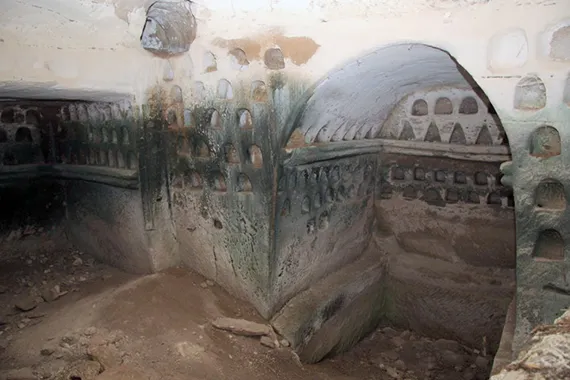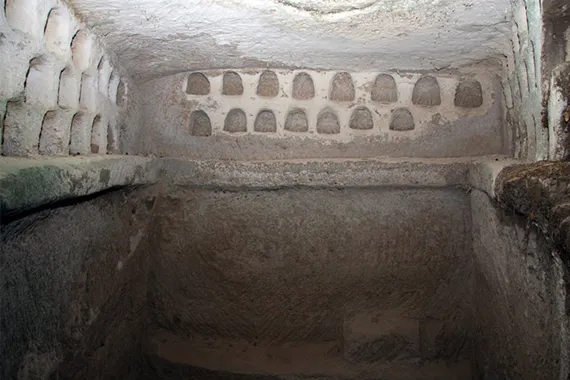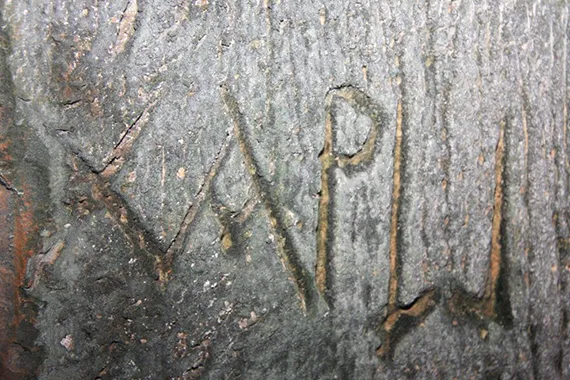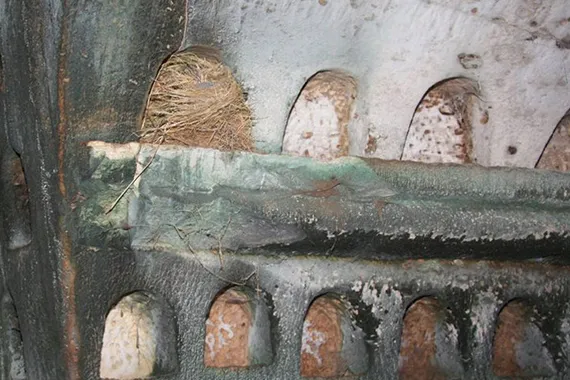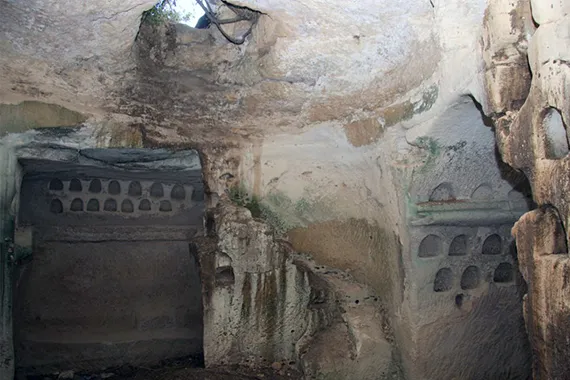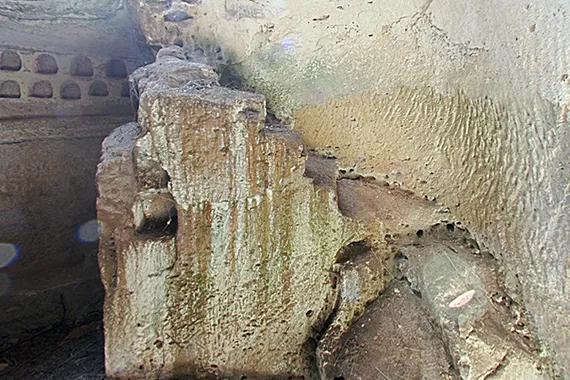Cruciform Columbarium

Cruciform Columbarium
A columbarium, or dovecote, is an installation for the breeding and housing of doves that was commonly used from the Hellenistic to Byzantine periods. During the Hellenistic period, columbaria took the form of subterranean chambers or complexes with hundreds of triangular or oval-shaped niches for the doves.
The numerous columbaria discovered thus far at Beit Lehi apparently date to this time period. During the Byzantine period, a columbarium was generally a circular or square stone-built tower.
Doves would have been used for food and their droppings as a fertilizer, although in the Hellenistic and Second Temple periods they would have been raised for sacrifice by pagans in their local temples and by Jews at the Temple Mount (Leviticus 1:14; Luke 2:21-24).
A subterranean cruciform (cross-shaped) columbarium was discovered approximately 1,200 feet north of the Jesus is Here cave Cave, dating to the Hellenistic period. It contains about 400 niches, the majority rounded, but some triangular. Entirely rock-hewn, each arm measures 10 x 13.5 feet. A hewn staircase, with the upper part missing, descends from the entrance to the floor. After the columbarium was apparently no longer in use, a narrow tunnel was hewn from the upper part of the chamber’s southeastern corner, which probably led to another chamber (presently blocked).
The Greek name “Charo” (XAPω) was found inscribed on the eastern wall of the southern arm. An inscribed greek cross is seen underneath the inscription. Late Iron Age pottery sherds have also been found scattered on the ground to the north and east of the columbarium.
Video
Video Transcript
We named this columbarium, or dovecote, as the Cruciform Columbarium because of its shape as a cruciform. It dates back to the third century BCE, to the Hellenistic Period, where the Edomites were settled in this settlement. It’s quite a unique columbarium, first of all because of its cruciform shape, and also because it contains dozens of niches for the turtledoves, part of them in the shape of a triangle and part of them as oval shaped niches.
As part of its unique architecture we have uncovered like a terrace on the upper part of the columbarium. This is only a decoration and a place where the turtledoves could walk and look at the other side of the columbarium. Also, we have uncovered at least two names of the people who worked here in the columbarium, probably the workers; one of them, the ancient name, Greek name, of Havo was inscribed on the wall.
Virtual Tour
The virtual tour for this location works on your computer web browser as well as a tablet or a phone. Best of all, it works on your headset. For instructions using an Oculus Quest, please see our virtual visit page.
Image Gallery
